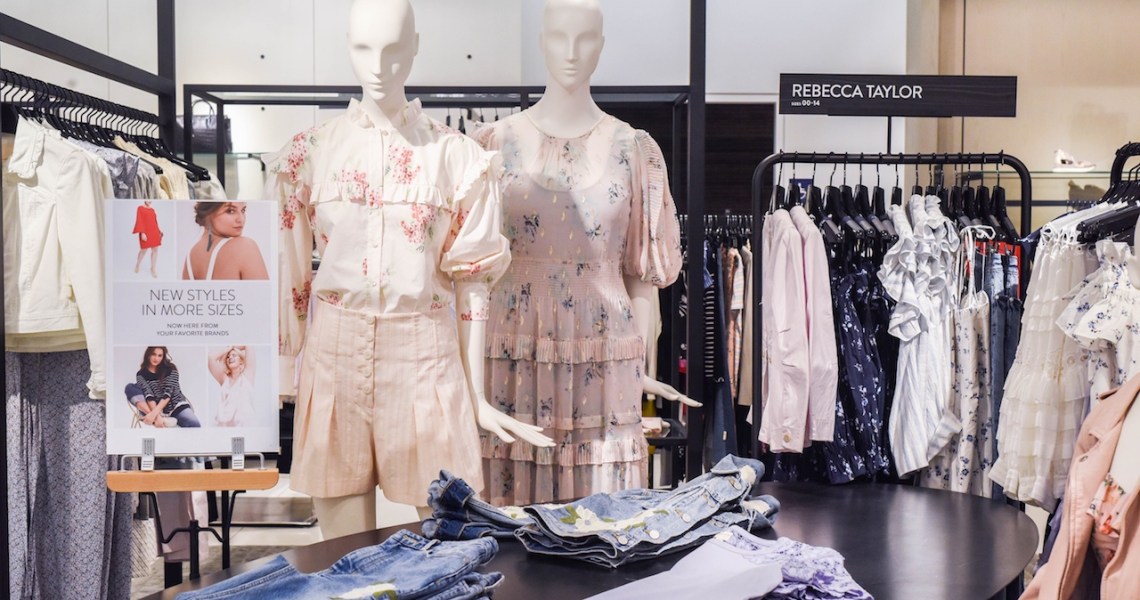Fashion retailers have already caught on to the potential of personal styling services, including the impact they can have on conversion rates, customer acquisition and average customer spend. But in addition to in-store styling services, like those offered by Macy’s, and box services, like those offered by Stitch Fix, there is another avenue for personal styling that retailers are starting to explore: at-home styling.
Currently, Nordstrom offers several different types of personal styling services, from the low-touch option where customers can go into a store and ask for help finding a size, to its highest-touch option: Nordstrom To You. With this service, first launched in select cities in 2017, a Nordstrom stylist visits a customer’s home, armed with a rack full of clothing for a styling session. Customers can pay $50 for a quick session or $400 for a full closet edit, in which a stylist helps them select which clothes to discard and which to buy to make over their wardrobe.
“In-home is the next big channel,” said Kathy Fisher, vp of customer experience at Nordstrom. “We have learned a ton about how popular this is in New York City, where many people’s closets are the size of a microwave. A full closet refresh is really powerful.”
Speaking at the Future Stores Seattle conference last week, Fisher said that Nordstrom has been emboldened to expand its styling services thanks to the tangible results other high-touch services have shown. For example, Nordstrom customers who buy online and pick-up in-store tend to spend twice as much as those who order online and shop in-store. Those who engage with Nordstrom’s alterations service — which was recently updated to allow customers to meet directly with tailors — spend three times as much.
“By delivering personalized experiences that drive top-line value, we can keep people coming back,” said Fisher. “Retail is changing. It’s fast and complex. Customers have more possibilities and more options than ever before. A lot of the things they can buy at Nordstrom, they could also buy elsewhere. So it has to be about the whole experience.”
Another fashion retailer experimenting with styling services is Modcloth. The brand has been in the e-commerce game for 17 years, but only launched brick-and-mortar two years ago and now has four locations. These showrooms, or FitShops, as Modcloth calls them, allow for the same sort of high-touch styling services that have given Nordstrom such a boost. Customers can shop with the help of a stylist who will help them with sizing and styling. They can then get their purchases shipped to their home or take them from the store, if among the stocked styles.
Monica Scholes, director of retail for Modcloth, said customers who engage with the brand’s styling services tend to spend twice as much as those who do not. What’s even more valuable is that these customers consistently purchase; those using the styling services have conversion rates of over 90%, while the rates of those who do not are 20-25%.
Ad position: web_incontent_pos1
Scholes said that Modcloth is not quite ready to go for the in-home channel, but she is impressed by what Nordstrom is doing and said Modcloth will be looking into the model closely.
She said in-home styling services likely come with challenges: “The labor costs would probably be significant,” Scholes said. “Think about New York. Every time you touch the product, the costs go up. You have to take product, bag it up, take it to them, have them try it on, bring it back — it’s not necessarily prohibitive, especially if it’s worth it, but we’d have to do some more extensive testing to see the cost-benefit analysis.”
However, that does not mean it’s not worth it. Modcloth sees a lot of success with its styling services bringing in loyal returning customers. Even if in-home styling services did not have immediate, huge returns, it would be worth it for the long-term benefit and loyalty it instills in customers, Scholes said.
“If they don’t transact right away, that’s OK,” Scholes said. “We want them to leave having had a good experience so they become a long-term customer in the future.”




